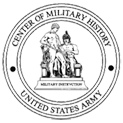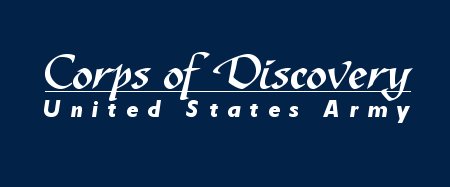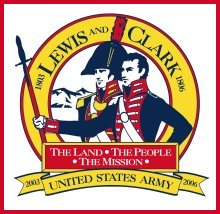A JOURNEY FOURTH: Celebrating our Nation’s Independence with the Lewis and Clark Expedition
By Lieutenant Colonel Mark J. Reardon
July Fourth in the year Eighteen Hundred and Four marked the twenty-eighth anniversary of the Declaration of Independence. Of all the celebrations taking place across the United States on that particular day, none were more meaningful than the simple ceremony observed on the banks of the Missouri River by a small detachment of American soldiers far from home. Although the infantrymen and artillerists taking part in that ceremony probably did not realize it at the time, they were celebrating the future of our nation as much as they were commemorating the achievements of our nation’s founders.
Because they were travelling against the current, the trip west thus far had been quite arduous and at times exceedingly dangerous. The keelboat, loaded with supplies for the expedition and gifts for Indian tribes, often proved difficult to maneuver up river. When the water was too shallow for the keelboat, the men set long poles in the river bottom and pushed on them as they walked front to rear on the keelboat’s deck. When that means of propulsion proved ineffective, the Soldiers were forced to haul the keelboat upriver using ropes. Sometimes they would pull on the ropes from shore and sometimes they were forced to stand in waist or neck deep water. In either case, hauling a keelboat up the Missouri River was backbreaking and arduous work.
While some parts of the river were quite shallow, there were also stretches of the Missouri that were deep and swiftly flowing. On 24 May 1804, the keelboat was sailing along with the current when it hit a sandbar and nearly sank. Captain Clark described the incident in harrowing detail:
“The swiftness of the current wheeled the boat [completely around], broke our tow rope, and nearly capsized the boat. All hands jumped up onto the side of the boat that was not under water until the current washed away the sandbar enough for the keelboat to break free again. The boat wheeled to the other bank and then turned completely around a third time before strong swimmers got a rope on her stern and fastened it to a tree on shore.”
Captain Meriwether Lewis was well aware that his men needed something positive to focus on after having been exposed to a lengthy period of great danger and arduous labor as they proceeded further up the Missouri River. On the morning of 3 July 1804, he had awoken to gaze once again on the unspoiled beauty of his surroundings. Lewis was probably struck by a sudden realization that the land as far as he could see was now part of the United States of America. Moments later, he was joined by his co-commander, Captain William Clark. After chatting for a few moments, both of the captains agreed they should make a special effort to observe the Nation’s birthday. A celebration was just the thing to take the men’s minds off the long journey ahead of them while reminding them why they volunteered to participate in the first American expedition to the Pacific Northwest in the first place.
At first light on 4 July, Lewis ordered the swivel gun on the keelboat to be fired in honor of the new day. Private John Fields was bitten by a snake when the party stopped to dine at Pond’s Creek sometime after 1 p.m., briefly taking everyone’s mind off the Fourth of July and focusing them instead on scanning the long grass to avoid getting bit themselves. Later that afternoon, Captain Lewis directed the men to ground the keelboat for the day near a creek flowing into the river. The Soldiers were sweaty and filthy from maneuvering the keelboat, so Lewis instructed First Sergeant John Ordway to have the men bathe before donning their uniforms for a simple Fourth of July commemoration he planned that evening. Lewis also authorized the distribution of an extra ration of whiskey to the Soldiers to toast the birth of their nation.
Before sundown, Lewis gathered the Soldiers for a short speech. He commented on their considerable achievements to date while candidly noting that great trials still lay ahead. In honor of the nation’s birthday, Lewis announced that the stream next to their camp site would henceforth be known as “Independence Creek” [the expedition earlier passed another creek that Lewis named “Fourth of July Creek”]. At the conclusion of the brief talk, he ordered the swivel gun fired once again to salute the end of a very special day.
The following day the expedition started out once more early in the morning, encountering a series of sand bars impeding their progress soon afterwards. The men found themselves pulling and poling the keelboat once again as the hot July sun beat down. Although most of the Soldiers belonging to the Lewis and Clark expedition did not realize it at the time, their efforts were transforming the Louisiana Purchase into something more than lines drawn on a map by European powers. Although it would take almost another hundred years, they were in fact defining the western expanses of the future United States of America.





